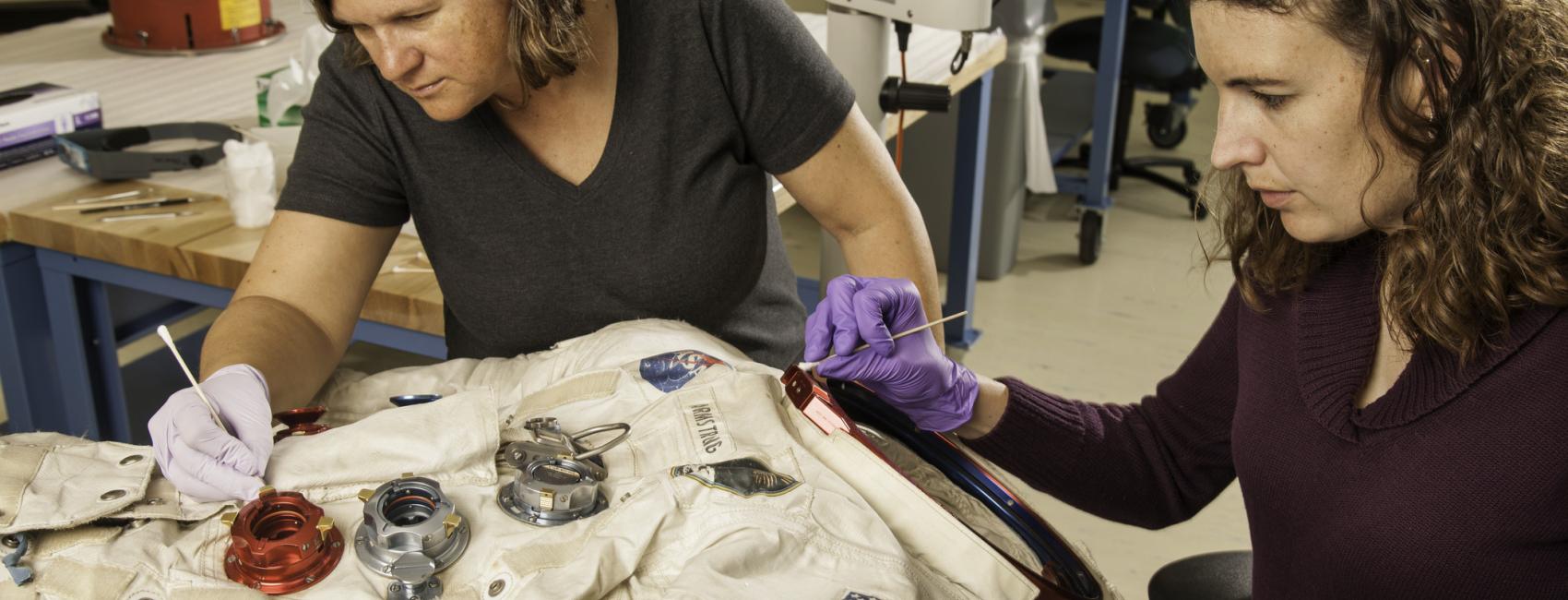
Jul 09, 2011
By Brett McNish is a supervisory horticulturist for Smithsonian Gardens
Moonbeams, rockets, and Blue Angels are not just showcased in the National Air and Space Museum — they are in the garden too! The extensive terraced garden that surrounds the Museum is now home to many plants with extraordinary cultivar names that reflect the Air and Space theme, like Skyrocket Juniper (Juniperus scopulorum ‘Skyrocket’) and Globemaster ornamental onion (Allium giganteum ‘Globemaster’). Cultivars are plants with unique characteristics that maintain these traits through breeding. These plants are typically bestowed a distinctive name which may reflect a particular attribute. Skyrocket Juniper, for example, received its name because it grows quickly to a 6 meter (20 foot) tall spire, but only reaches .5 meters (2 feet) wide, thus resembling a tall green rocket. The range of plant names that can be assigned is practically limitless. Memorable historical events can also inspire the naming — or renaming — of plants. The launch of Sputnik I in 1957, for instance, opened new frontiers of plant names befitting the Space Age; common marigolds and petunias were reintroduced to gardeners as blazing comets or flying saucers in outer space. Since January, Smithsonian Gardens staff has been hard at work enhancing the terrace garden surrounding the National Air and Space Museum. A work plan was launched with a brainstorming session that focused on how best to bring the Air and Space theme to the garden area, essentially reflecting the inside outdoors, and beginning the visitors’ Museum experience as soon as they stepped onto the grounds. Preliminary planning resulted in an extensive list of plants with air- and space-inspired cultivar names.
Over the coming months, the garden areas at the Museum will be enhanced with nearly 300 perennials and 13,000 bulbs. Just a few of the exciting new plants going into the garden include Minuteman and Blue Angel Hosta, orange Tang tulips, giant purple Globemaster ornamental onion, tiny Moonbeam coreopsis, and Eremurus bungei which are commonly called desert candles but very much look like the fiery exhaust that follows the space shuttle into space.
Despite being earth-bound, the garden at the National Air and Space Museum incorporates a variety of plants, shrubs and trees that pay homage to the skies above us. Now, visitors will not only see Cold War relics, rockets’ red glare, and jet engines inside, but also jetfire daffodils and Minuteman Hostas outside!

We rely on the generous support of donors, sponsors, members, and other benefactors to share the history and impact of aviation and spaceflight, educate the public, and inspire future generations. With your help, we can continue to preserve and safeguard the world’s most comprehensive collection of artifacts representing the great achievements of flight and space exploration.
We rely on the generous support of donors, sponsors, members, and other benefactors to share the history and impact of aviation and spaceflight, educate the public, and inspire future generations. With your help, we can continue to preserve and safeguard the world’s most comprehensive collection of artifacts representing the great achievements of flight and space exploration.